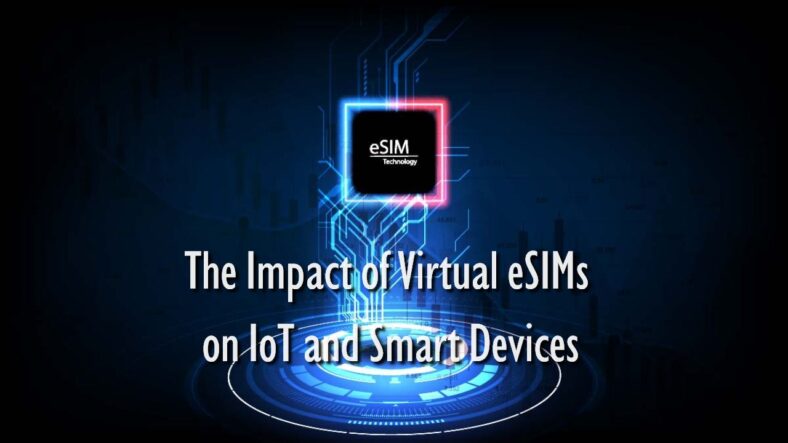In an era dominated by the seamless integration of technology into our daily lives, the impact of virtual eSIMs on the Internet of Things (IoT) and smart devices cannot be overstated. As we witness a paradigm shift in connectivity, virtual eSIMs play a pivotal role in reshaping the way our devices communicate. One notable player in this transformative landscape is Telesim, a company at the forefront of revolutionizing connectivity through their innovative approach to virtual eSIM technology. Visit telesim.com to explore the cutting-edge solutions they offer and delve into the transformative potential of virtual eSIMs.
Seamless Integration for IoT Devices

One of the most significant impacts of virtual eSIMs is their ability to seamlessly integrate with a diverse range of IoT devices. Unlike physical SIM cards, which often pose challenges in terms of size and compatibility, virtual eSIMs can be easily programmed and embedded into a variety of IoT devices, from smart home appliances to industrial sensors. This versatility not only simplifies the manufacturing process but also opens up new possibilities for innovative and compact IoT solutions.
Global Connectivity Without Boundaries
Virtual eSIMs eliminate the need for physical swapping of SIM cards when crossing borders. With these digital counterparts, smart devices can effortlessly switch between different mobile networks, ensuring uninterrupted connectivity on a global scale. This freedom from geographical constraints is a game-changer for businesses and individuals alike, facilitating the seamless functioning of IoT devices and smart gadgets in diverse locations without the hassle of manual intervention.
Enhanced Security Protocols

Security has always been a paramount concern in the digital age, and virtual eSIMs address this concern head-on. By employing advanced encryption and authentication protocols, these digital SIMs enhance the overall security of connected devices. This robust security infrastructure not only protects sensitive data but also mitigates the risks associated with physical SIM card tampering, ensuring a more secure environment for the expanding IoT ecosystem.
Cost-Efficiency and Scalability
Traditional SIM cards often come with logistical challenges, especially when it comes to managing large-scale IoT deployments. Virtual eSIMs offer a cost-effective and scalable solution to this problem. Businesses can remotely manage and update the connectivity profiles of their devices, reducing the need for manual intervention and minimizing operational costs. This scalability proves invaluable as IoT ecosystems continue to grow and diversify across industries.
User Empowerment and Device Flexibility
Virtual eSIMs empower users with greater control over their device connectivity. Users can easily add or switch mobile carriers without the need for physical SIM cards, promoting a more flexible and user-friendly experience. This newfound flexibility extends beyond mobile networks, allowing users to tailor their connectivity preferences based on factors such as data plans, coverage, and performance, enhancing the overall user experience in the IoT and smart device realm.
In conclusion, the impact of virtual eSIMs on IoT and smart devices is nothing short of revolutionary. These digital SIMs usher in a new era of connectivity, enabling seamless integration, global reach, enhanced security, cost-efficiency, and user empowerment. As we embrace the era of digital transformation, the role of virtual eSIMs in shaping the connectivity landscape cannot be overstated. With their inherent advantages, these tiny yet powerful chips are paving the way for a more connected and efficient future.

Leave a Reply